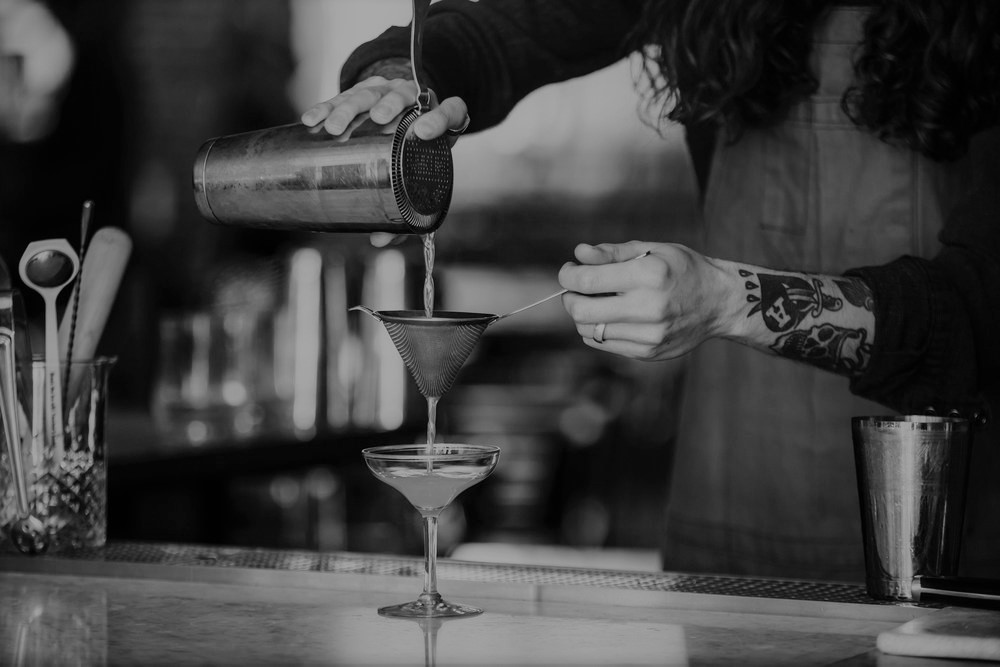7 Strategies for Building a More Effective Beverage Program
Originally Posted on FoodableTV – By Doug Radkey 06/14/2018
Every drop counts! Beverages arguably play a larger role in the industry today than they ever did before!
You could try and make everyone happy by offering dozens of options at your restaurant, cafe, or bar, but we all know that’s likely not going to happen. An establishment needs to carefully consider their beverage menu, whether alcohol-focused or not, and offer one that is balanced, targeted, and one that fits their concept.
Many operators continue to face a challenge, however, when it comes to developing an effective beverage strategy. As with its food counter-part, consumers are more educated today about beer, cocktails, wine, coffees, sodas, and even a variety of waters. They understand retail prices and flavor profiles because they’ve become (or think they’ve become) a barista, mixologist, and/or wine & beer connoisseur at home. When they’re dining out or visiting a bar now, they crave something that’s ‘differentiated.’
How can restaurants, cafes, and bars take advantage of this segment and develop a memorable, consistent, and profitable beverage strategy that creates differentiation? Here are some tips to review when creating or re-engineering your next beverage menu.

1. Day-Part Strategy. First, let’s look at your hours of operation and overall concept. Taking advantage of different day-parts is critical to maximizing each delicate moment of the day. Look at your mornings, lunch periods, afternoons, dinner hours, and late night day-parts. One segment that is taking off, for example, is the hybrid of ‘coffee by day – cocktails by night’. Both of these beverage categories now require a high level of skill, if executed properly (we’re not talking basic drip coffee here). Can your restaurant, bar, or even cafe, introduce a beverage strategy that targets specific time-frames of the entire day?
2. Session Drinks. The drinking ‘culture’ associated with alcohol, in particular, has definitely changed over the past decade thanks to strict driving laws, the cost of ‘going out’, and the sophistication of consumers. Society today wants to maintain some measure of sobriety when they’re out in public. Therefore the days of ‘strong’ cocktails or binge drinking at the bar are diminishing. For your next menu, consider low-levels of alcohol in highly creative cocktail platforms in addition to flavourful beers that have less than 3% abv. In summary, a “session drink” is a beverage low in alcohol which can be consumed in ‘larger’ quantities without making someone excessively intoxicated.
3. Beverage Science. What are the age brackets, income levels, and the number of men vs. women you’re targeting at your establishment? How long are your guests intending to stay? This all plays a part in their choice of beverage offerings. Still focusing on alcohol, let’s have a quick lesson.
Alcohol is a depressant or a “sedative-hypnotic drug” because it depresses our central nervous system. Every organ in the human body can be affected by alcohol. In an average person, the liver breaks down roughly one standard drink of alcohol per hour. Excess alcohol then moves throughout the body making the body ‘impaired’. At low doses, however, alcohol can act as a simple stimulant, where people may feel happy, or become talkative.
This mindset and thought processes have to be considered in the development of a beverage strategy, especially one involving alcohol. Consider the volume of alcohol, the sugar levels in the mixers (juices and soda), the potential pairings with food (yes, even if you’re a sports bar concept) and how it will affect your target customers during their stay.
4. Perception of Value. Many restaurants & bars are still trying to ‘up-sell’ that extra ounce or two of spirits or upgrade to a glass of beer that’s larger than a traditional pint. Using the discussion points noted above, it may be wise to consider ‘down-selling’ to deliver that new perception of value. This is a reason why beer flights, for example, are effective (less beer, stronger profits, and visually impressive). All beverages must elevate the guests’ sense of smell, taste, and vision to create a positive emotion and perception of value. Consider this mindset first before trying to add that extra ounce of alcohol instead!
5. Reward Creativity. An effective beverage strategy, similar to that of food – also includes the development of limited time offers (LTO’s). Get your baristas and bartenders to create unique cocktails, iced teas, iced coffees, or craft sodas that are ‘Instagram Worthy’ – and then reward them for that creativity. This is also a great way to generate staff engagement, social media engagement, and to generate a new channel of potential revenue.
6. Sustainability. When developing your next beverage menu, consider sustainability. Let’s think about it; there is a high use of energy within ice machines, refrigeration, and glass cleaning appliances. There is an enormous amount of waste in garnishes, straws, bottles, and napkins (to name a few). How can your establishment re-purpose ingredients, use more edible garnishes, conserve energy, and work with beverage suppliers to make a difference by reducing waste by 25-50% over the next six months within your venue? Make it a team challenge!
7. Price and Speed. Lastly, you want to keep your beverage menu compact and balanced with the right mix of high-quality choices and price points your target market will resonate with. You also want to ensure beverages are produced at a cost-effective speed. High-quality coffee, sodas, and cocktails, in particular, still need to be quick. How many of one specific drink can your team produce per hour? Anything over 60-90 seconds becomes a problem for venues and consumers. This comes down to production strategies and service training techniques. Make sure this is reviewed before going to print!
By now, you should see that the beverage category is a brand differentiator. When you ‘humanize’ that beverage experience, it takes it out of the realm of being a ‘commodity’. No matter your concept, there are strategic ways to maximize your beverage potential.
